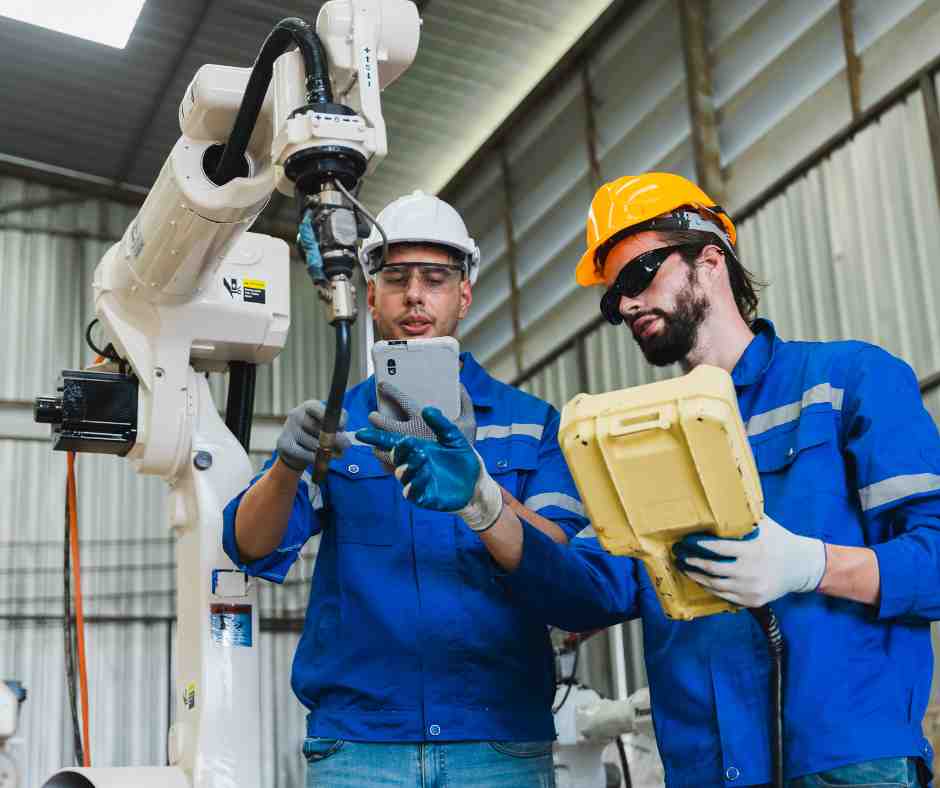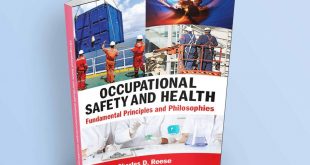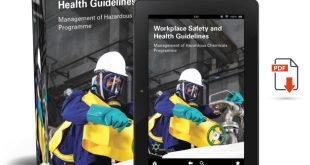Industrial Safety Management
Industrial safety management is the systematic approach to ensuring the safety, health, and well-being of workers, equipment, and the environment in industrial settings. It encompasses policies, strategies, and practices that identify, evaluate, and mitigate risks, ensuring that safety is prioritized at every stage of operations. Effective safety management can reduce incidents, prevent injuries, and enhance overall productivity by promoting a safety-conscious culture within the organization.
This article explores the fundamentals of industrial safety management, dividing it into three essential components: safety by design, safety analytics, and safety management. Each section addresses specific strategies and technologies that contribute to creating safer industrial environments.
Table of Contents
TogglePart I: Safety by Design
Prevention Through Design
Prevention through design (PTD) focuses on eliminating or minimizing risks at the design stage of industrial processes, machinery, or structures. By integrating safety considerations into the design process, engineers and designers can create systems that inherently reduce hazards before they arise. PTD principles aim to proactively address potential hazards rather than reacting to them after an incident occurs.
For example, designing machines with safety guards, automated shut-off systems, and ergonomic features can prevent injuries or accidents. The principle of PTD extends to creating workplace layouts that enhance accessibility, emergency evacuation, and reduce exposure to harmful substances.
Virtual Prototype-based Simulator for EOT Crane
In the case of Overhead Traveling (EOT) cranes, safety can be significantly improved by using virtual prototype-based simulators. These simulators replicate the behavior of EOT cranes under various operating conditions, allowing operators and engineers to identify and correct potential safety issues before the crane is physically constructed. By using this technology, issues such as crane instability, load balancing, and improper operation can be simulated and rectified in the virtual environment, reducing the likelihood of accidents during actual operation.
Reduction of Coal Dust Exposure Using Water Mist System
In industries like mining and coal processing, workers are often exposed to harmful coal dust, which can cause respiratory issues and even lead to dangerous explosions. One effective solution to mitigate coal dust exposure is the use of water mist systems. These systems release fine mist sprays that bind with dust particles, causing them to settle quickly and preventing them from becoming airborne. By incorporating water mist systems into the design of coal handling equipment, industries can significantly reduce dust-related health risks and improve air quality for workers.
A Study on Performance Parameters Associated with the Effectiveness of Antilock Braking System
Antilock Braking Systems (ABS) are crucial safety features in vehicles and heavy machinery, preventing wheels from locking during braking and maintaining vehicle control. Research into the performance parameters of ABS focuses on factors such as stopping distance, braking force, and response time. By evaluating these parameters, engineers can optimize ABS designs to enhance safety, particularly in hazardous environments like construction sites, where heavy machinery operates on uneven surfaces. Studying the effectiveness of ABS in different conditions helps reduce accidents and improves operational safety.
Part II: Safety Analytics
Safety Professional Reference and Study Guide
Safety professionals play a vital role in ensuring workplace safety by conducting risk assessments, developing safety protocols, and responding to incidents. A reference and study guide for safety professionals provides valuable information on safety regulations, best practices, hazard identification, and risk mitigation strategies. Such guides are essential for both newcomers to the field and seasoned professionals, helping them stay updated on industry standards and safety innovations.
Data-driven Mapping Between Proactive and Reactive Measures of Occupational Safety Performance
Data analytics has become a cornerstone of modern safety management. By mapping the relationship between proactive measures (like safety training, inspections, and hazard identification) and reactive measures (such as incident reporting and investigation), organizations can gain insights into how their safety strategies are performing. A data-driven approach allows safety managers to identify trends, spot weaknesses in safety protocols, and make informed decisions about where to allocate resources for maximum impact.
Prediction of Occupational Incidents Using Proactive and Reactive Data
Predictive analytics in safety management uses historical data from both proactive and reactive safety measures to forecast potential incidents. By analyzing trends, risk factors, and patterns from past incidents, predictive models can alert organizations to areas of concern, allowing them to take preventive action before an accident occurs. This approach shifts safety from a reactive to a proactive stance, enhancing the ability to prevent incidents and injuries.
Determinants of Risk Indices in Hard Rock Mine Using Loglinear Model
Risk assessment in industries like mining is critical to ensuring worker safety. In hard rock mines, the complexity of the environment requires advanced risk analysis techniques. The loglinear model is a statistical tool used to determine the risk indices associated with various hazards in the mining environment. By analyzing factors like rock stability, equipment reliability, and environmental conditions, this model helps identify high-risk areas and prioritize safety interventions, reducing the likelihood of accidents.
Mathematical Modelling of Human Energy Consumption
Understanding human energy consumption is essential for designing work processes that minimize fatigue and improve safety. Mathematical models that simulate human energy expenditure during physical tasks help in designing work schedules, environments, and ergonomic tools that optimize performance while reducing the risk of injury. These models also contribute to understanding how various factors like temperature, workload, and duration impact worker health and safety.
Managing Health and Safety Learning Made Simple
Simplifying health and safety training is crucial for ensuring that workers at all levels understand and can implement safety protocols. Training programs that use straightforward language, engaging multimedia, and practical examples make it easier for workers to grasp complex safety concepts. By making safety learning accessible and engaging, organizations can enhance safety compliance and reduce the likelihood of accidents.

Part III: Safety Management
Assessment of Significance of Safety Life Cycle Management
Safety Life Cycle Management (SLCM) refers to the continuous process of identifying, evaluating, and mitigating risks from the design phase through the operation and eventual decommissioning of equipment. The assessment of SLCM’s significance involves evaluating its impact on long-term safety performance. By integrating safety into every phase of a project’s life cycle, organizations can identify potential risks early and ensure that safety measures are maintained throughout the system’s use, ultimately reducing long-term hazards.
Understanding the Human-Computer Interaction Behavior in Electrical and Power Systems
Human-computer interaction (HCI) plays a critical role in the safety and performance of electrical and power systems. The behavior of workers interacting with control systems, automation, and monitoring interfaces can significantly impact system efficiency and safety. By studying and improving HCI, engineers can design more intuitive and user-friendly control systems, reducing the likelihood of human error and enhancing overall safety in power plants and electrical grids.
Conclusion
Industrial safety management is essential to maintaining a safe and productive work environment. By incorporating safety by design principles, utilizing advanced safety analytics, and applying comprehensive safety management strategies, organizations can significantly reduce risks and improve workplace safety. Through innovations like predictive analytics, virtual simulations, and the integration of safety throughout the life cycle of equipment, industries can create safer workplaces, preventing accidents, and enhancing the well-being of their workforce.
 Boilersinfo Boiler and Mechanical Power Digital Library
Boilersinfo Boiler and Mechanical Power Digital Library





